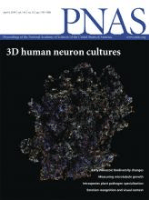
PROCEEDINGS OF THE NATIONAL ACADEMY OF SCIENCES OF THE UNITED STATES OF AMERICA
Scope & Guideline
Elevating Research to Transform the World
Introduction
Aims and Scopes
- Interdisciplinary Research:
PNAS publishes research that integrates multiple disciplines, reflecting the interconnected nature of scientific inquiry. This includes studies that combine biology, chemistry, physics, and social sciences to provide holistic insights. - Innovative Methodologies:
The journal emphasizes the use of advanced methodologies in research, including high-throughput technologies, computational models, and novel experimental techniques, which enhance the ability to explore complex scientific problems. - Global Impact Studies:
Research published in PNAS often focuses on global challenges such as climate change, public health crises, and biodiversity loss, providing insights that can inform policy and practice at national and international levels. - High-Quality Basic and Applied Research:
The journal publishes both fundamental studies that advance theoretical understanding and applied research that addresses practical problems, showcasing a wide array of scientific achievements. - Robust Peer Review Process:
PNAS maintains a rigorous peer review process to ensure that published research is of high quality, contributing to the credibility and reliability of the findings presented.
Trending and Emerging
- Climate Change and Environmental Science:
Research addressing the impacts of climate change, including studies on biodiversity loss, ecosystem resilience, and sustainable practices, has surged. This reflects a growing recognition of the urgency of environmental challenges. - Health and Disease Mechanisms:
Emerging themes in health research, particularly related to infectious diseases (such as COVID-19) and chronic conditions, showcase a trend towards understanding the molecular and systemic mechanisms underlying diseases. - Neuroscience and Behavioral Studies:
There is an increasing focus on understanding the neural basis of behavior, cognition, and mental health, highlighting the interplay between biology and psychology in addressing complex human conditions. - Technological Innovations in Research:
The incorporation of advanced technologies such as CRISPR, synthetic biology, and artificial intelligence in various fields is rapidly expanding. This trend is indicative of a shift towards more innovative and efficient research methodologies. - Social Sciences and Policy Impact:
Research exploring the intersections of science with social issues, such as inequality, public health, and environmental justice, is gaining traction. This reflects an emphasis on how scientific findings can inform policy and societal change.
Declining or Waning
- Traditional Ecology Studies:
Research focused solely on traditional ecological studies, without integrating modern technological approaches or interdisciplinary perspectives, appears to be waning. This shift may be due to the increasing complexity of ecological research requiring more integrative methodologies. - Basic Molecular Biology Studies:
While foundational research remains crucial, there has been a noted decline in studies that do not translate into practical applications or interdisciplinary insights, as the focus shifts towards applied and translational research. - Studies Lacking Policy Relevance:
Research that does not directly address or inform pressing global challenges, such as climate change or public health, is becoming less favored, as funding agencies and journals prioritize work with clear societal impacts. - Narrowly Focused Animal Studies:
Research limited to specific animal models without broader ecological or evolutionary context has seen a decrease, as there is a growing emphasis on studies that connect findings across various species and ecosystems.
Similar Journals
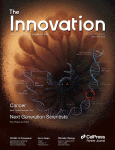
Innovation
Advancing Knowledge Through Multidisciplinary InnovationInnovation is an esteemed open-access journal published by CELL PRESS that has emerged as a leading platform for multidisciplinary research since its inception in 2020. With an impressive Scopus rank of #3 out of 171 in the multidisciplinary category and a notable impact factor placing it in the 98th percentile, the journal has quickly established itself as a crucial resource for researchers and professionals seeking to disseminate groundbreaking ideas and developments across various fields. Located in the United States, at 50 Hampshire St, Floor 5, Cambridge, MA, Innovation aims to foster collaboration and innovation by providing unrestricted access to advanced research. Its commitment to excellence is reflected in its categorization as Q1 in 2023, indicating its high citation and influence within the academic community. The journal invites submissions that push the boundaries of knowledge and encourages scholarly discourse, making it an indispensable resource for students, researchers, and practitioners committed to making impactful contributions to their respective fields.
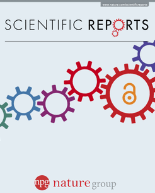
Scientific Reports
Bridging Gaps in Research Across Diverse Fields.Scientific Reports, published by the esteemed NATURE PORTFOLIO, is a prominent multidisciplinary journal that has been making significant strides in scientific communication since its inception in 2011. With an impressive impact factor and ranked in the Q1 category of multidisciplinary journals, it holds a respected position, placing it at #14 out of 171 according to Scopus rankings, reflecting its high citation rates and robust academic contributions in the 92nd percentile. The journal operates under an Open Access model, enabling broad dissemination of research findings and advancing scientific knowledge globally. Based in the United Kingdom, with offices in Germany, Scientific Reports is committed to publishing high-quality, peer-reviewed research across diverse fields, catering to the needs of researchers, professionals, and students alike, fostering collaboration and innovation in the scientific community.

Revista Eureka sobre Ensenanza y Divulgacion de las Ciencias
Transforming Pedagogy with Cutting-Edge ResearchRevista Eureka sobre Ensenanza y Divulgacion de las Ciencias is a premier open-access journal dedicated to advancing the fields of education and science communication. Published by the University of Cadiz in Spain, this journal has established itself as a vital platform since its inception in 2004. With an ISSN of 1697-011X, it aims to disseminate innovative research and pedagogical strategies that enhance the understanding and teaching of scientific disciplines. As of 2023, it holds a Q3 categorization in Education with a Scopus rank of #989/1543, reflecting its commitment to academic excellence and relevance. The journal's open-access model ensures that valuable research is readily available to educators and researchers worldwide, fostering a community engaged in the promotion of effective science education. With a focus on bridging theoretical and practical applications, Revista Eureka invites contributions that spark dialogue and inspire new methodologies in science teaching and dissemination.

Nature Communications
Empowering Innovative Research Across DisciplinesNature Communications is a premier open-access journal published by NATURE PORTFOLIO, distinguished for its broad scope encompassing Biochemistry, Genetics and Molecular Biology, Chemistry, and Physics and Astronomy. With a remarkable impact factor, this journal has achieved Q1 status in multiple disciplines, reflecting its pivotal role in disseminating high-quality research. Since its establishment, it has provided a vital platform for innovative and interdisciplinary studies, fostering collaboration among scientists worldwide. Situated in the United Kingdom, it has rapidly gained recognition, ranking 7th in Global Physics and Astronomy and Biochemistry, as well as 16th in Chemistry according to Scopus metrics. Accessible since 2015, Nature Communications facilitates the sharing of groundbreaking ideas, making it an invaluable resource for researchers, professionals, and students aiming to stay at the forefront of scientific discovery.
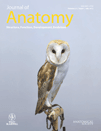
JOURNAL OF ANATOMY
Exploring the Intricacies of the Human BodyThe JOURNAL OF ANATOMY, published by Wiley, is a premier international journal dedicated to advancing the field of anatomy and its related disciplines. With the ISSN 0021-8782 and E-ISSN 1469-7580, this esteemed journal has been at the forefront of anatomical research since its inception in 1945. Renowned for its rigorous peer-review process, the journal has earned a prestigious impact factor reflecting its high standard of scholarly work. This includes a 2023 Quartile ranking of Q1 in Anatomy, underscoring its prominence among top-tier publications. The journal’s diverse scope encompasses key fields such as cell biology, developmental biology, and molecular biology, making it an essential resource for researchers and practitioners alike. Publishing cutting-edge research and reviews, the JOURNAL OF ANATOMY aims to foster innovative scientific discourse and exploration within the anatomical sciences, solidifying its role as a vital hub for the global anatomical community.

Natural Sciences
Empowering researchers through open access to groundbreaking discoveries.Natural Sciences is a premier journal published by WILEY, dedicated to advancing the interdisciplinary field of natural sciences through the dissemination of high-quality research. With an ISSN of 2698-6248, this publication features original contributions that explore a wide range of topics including biology, chemistry, physics, and environmental science. Despite the current absence of an impact factor, the journal's commitment to rigorous peer-review ensures the integrity and relevance of its scholarly work. Situated at the forefront of scientific inquiry, Natural Sciences serves as a vital resource for researchers, professionals, and students looking to stay informed about the latest breakthroughs and methodologies in the natural sciences. Emphasizing open access principles, this journal strives to make cutting-edge research readily available to a global audience, fostering collaboration and innovation across disciplines.
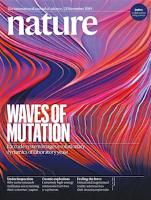
NATURE
Connecting Ideas, Shaping the Future of ScienceNATURE, published by NATURE PORTFOLIO, stands as a premier academic journal in the field of multidisciplinary sciences, and has consistently ranked number one in its category, reflecting its influence and prestige with an impressive 99th percentile position among 171 journals in the Scopus rankings. With an illustrious history dating back to 1869, this journal serves as a critical platform for disseminating pioneering research and groundbreaking discoveries across a myriad of disciplines. While it maintains a traditional publishing model, NATURE's significance is underscored by its high impact factor, making it an essential resource for researchers, professionals, and students seeking to stay at the forefront of scientific advancements. The journal's headquarters are located in Berlin, Germany, and it continues to shape the scientific dialogue globally.

MethodsX
Empowering innovation in clinical methods and laboratory practices.MethodsX is a premier peer-reviewed journal published by Elsevier, dedicated to advancing the field of applied methods across various disciplines, particularly in Clinical Biochemistry and Medical Laboratory Technology. Since its inception in 2014, this Open Access journal has fostered innovation by allowing researchers to share and access high-quality methodologies designed to enhance reproducibility and effectiveness in research practices. Based in the Netherlands, MethodsX has achieved an impressive ranking in the Scopus database, placing in the top 78th percentile among multidisciplinary journals. The journal is committed to providing researchers, professionals, and students with a platform to disseminate new techniques and strategies, ensuring that groundbreaking methods are readily available to the global scientific community. With a focus on fostering collaboration and interdisciplinary research, MethodsX aims to bridge gaps across various scientific domains and empower future advancements until its converged years in 2024.

Earth System Science Data
Empowering Research with High-Quality Earth DataEarth System Science Data, published by COPERNICUS GESELLSCHAFT MBH, is a premier open access journal dedicated to advancing the field of Earth and planetary sciences. With an impressive impact factor, it holds a distinguished Q1 ranking in the Earth and Planetary Sciences category, underscoring its significance within the scientific community. Established in 2009, the journal has been committed to providing a platform for the dissemination of high-quality, freely accessible research data that supports the understanding and management of Earth's complex systems. The journal welcomes contributions that offer extensive datasets, innovative methodologies, and collaborations that push the frontiers of Earth sciences, making it an essential resource for researchers, professionals, and students alike. Based in Göttingen, Germany, Earth System Science Data remains a vital asset for those seeking to engage with and contribute to impactful scientific discourse across the globe.

Science Bulletin
Unveiling breakthroughs in science.Science Bulletin is a premier multidisciplinary journal published by Elsevier, renowned for its commitment to advancing scientific knowledge across various fields. With an impressive impact factor and achieving a distinguished Q1 category ranking in 2023 within its multidisciplinary scope, Science Bulletin stands out for its rigorous peer-review process and high-quality research dissemination. Since its inception in 2015, the journal has been pivotal in bridging gaps between diverse scientific disciplines, fostering collaboration and innovation. Researchers and professionals can benefit from its Open Access options, ensuring wider visibility and accessibility of groundbreaking research. With a Scopus rank of #4 out of 171, placing it in the 97th percentile, Science Bulletin continues to set the standard for scholarly excellence, making it an essential resource for those seeking to stay at the forefront of scientific discovery.